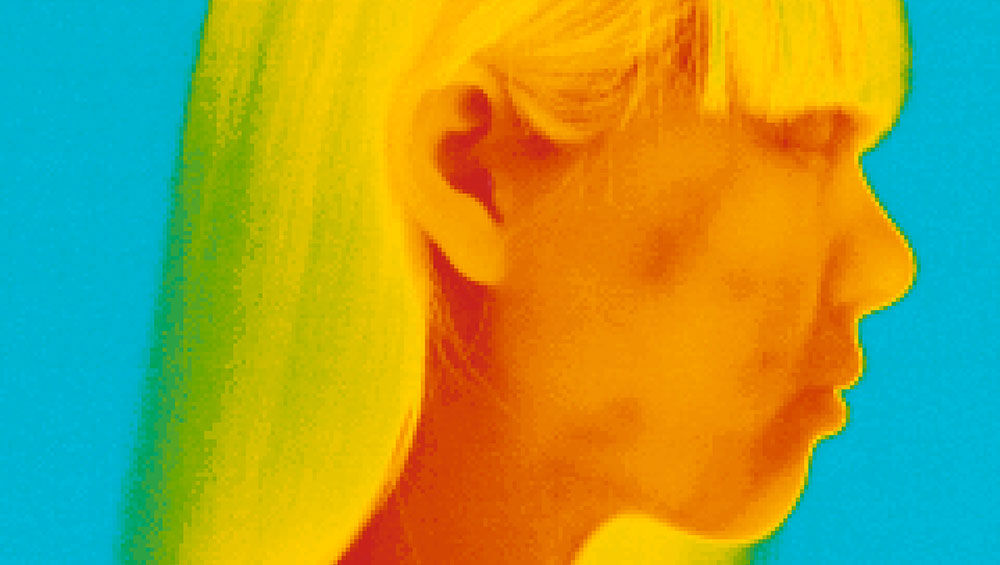
Kenji Hirasawa. Deep Lee, London, 2010 (detail), from the series Portraits.
by KANAE HASEGAWA
Kenji Hirasawa (b1982, Tokyo), who currently lives in Japan, studied for a BA in environmental information at Keio University in Japan, before obtaining a master’s in photography at the Royal College of Art, London, in 2016. Since 2004, he has been using a thermal imaging camera to take portraits that capture the non-figurative nature of people, expressed through body heat. He has taken part in numerous group exhibitions, including Paris Photo 2012, Grand Palais, Paris, New Japanese Photography at the Doomed Gallery, London, in 2015, and BEYOND 2020 #5 at the Kunstenhuis in Amsterdam and the Galerie Nicolas Deman in Paris in 2017. During his current exhibition in Tokyo, Light and Heat at the MYD Gallery, Hirasawa talked to Studio International about why he uses a thermal imaging camera to make portraiture, and his thought on the ultimate sign of human life – temperature.
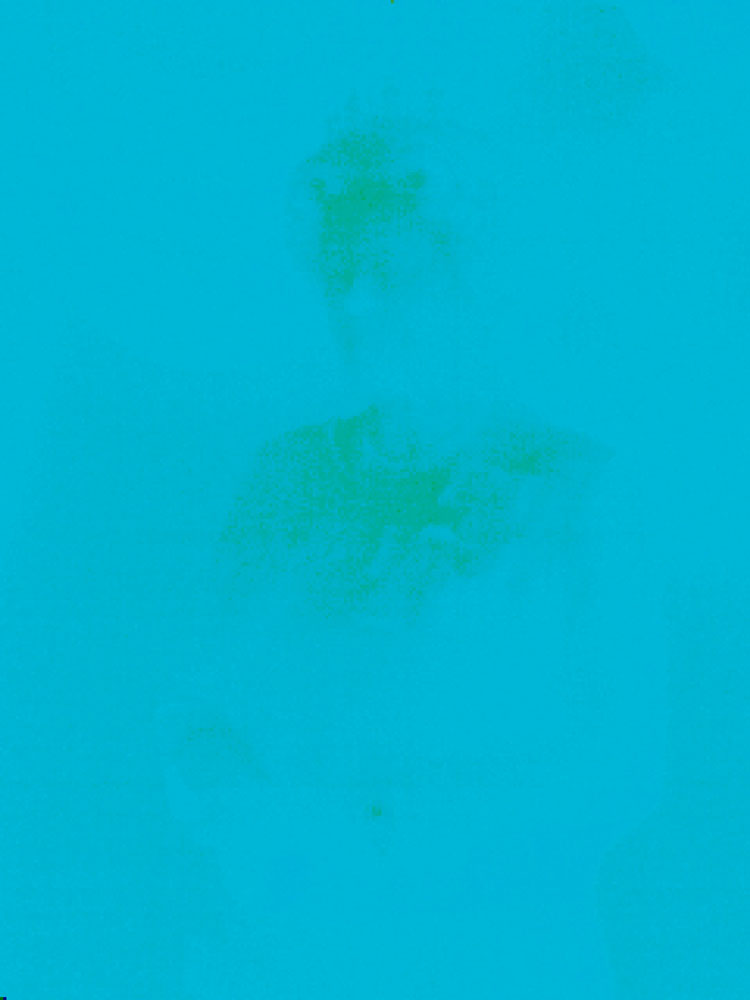
Kenji Hirasawa. Queen Elizabeth II, 2010, from the Celebrities series (2009-2011).
Kanae Hasegawa: What has led you to work consistently using a thermal imaging camera since 2004?
Kenji Hirasawa: Scientific technology enables humans to enhance their physical capabilities, bringing human perception to another level. Visualisation of the non-visual world questions human perception and the value of the existing visualised world. It also can bring about something that could not have been explained in words. Thermal imaging cameras capture infrared radiation emitted from our body and visualise that body temperature in colour tones.
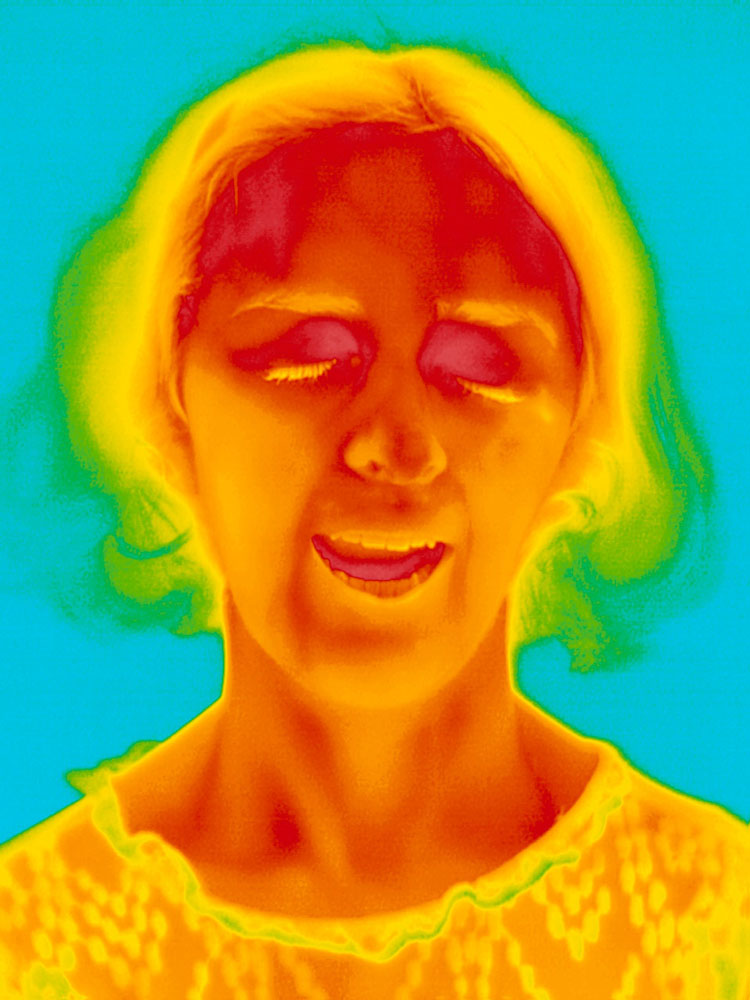
Kenji Hirasawa. Sophie, London, 2017, from the series Play Face.
KHa: In general, thermal imaging cameras are used as security cameras. Do you have any thoughts about surveillance?
KHi: I have not approached the sitters of my photographs with the idea of surveillance, although the relationship with the sitter, or the distance I keep from them, will change depending on my project. The way I approach the sitter is more like the guardian angel Damiel in the film Wings of Desire, watching over them from far away.
KHa: Your portraits, through the tones of red, yellow, green and blue, are proof that the sitter is a living being. However, the thermographic images don’t show the expression or character of the sitter. Why are you attracted to this type of photography?
KHi: When I started my Portraits series in 2004, my focus was on bringing out eternal human nature by restricting the differences in human expression and limiting what the sitter was wearing to simple garments. On the other hand, for Celebrities, a series of works I made from 2009 to 2011, the sitters were not living, but were wax figures of celebrities in Madame Tussauds in London. To some degree, you can recognise who the portrait is depicting by the silhouette, but attaching the name of the sitter has enabled viewers to visualise the sitter in a concrete way. After losing the person I loved most, in 2011, I started to think deeply about the immateriality such as heart and emotion as the very nature of a person. I began to accept the transient movement which resulted in the portrait series Play Face, of 2017. These portraits were made while the photographer and the sitter played with different facial expressions. My intention was to capture the shifting moment of emotion, to reveal the richness in human expression. Later, I started to explore the soul and spiritual entity through photographing a series of animal portraits, Horse and Untitled (Animal). Untitled (Animal) is an ongoing project, in which I photographed various animals, using a thermal imaging camera. The objective is to visualise the inherent energy in the animals.
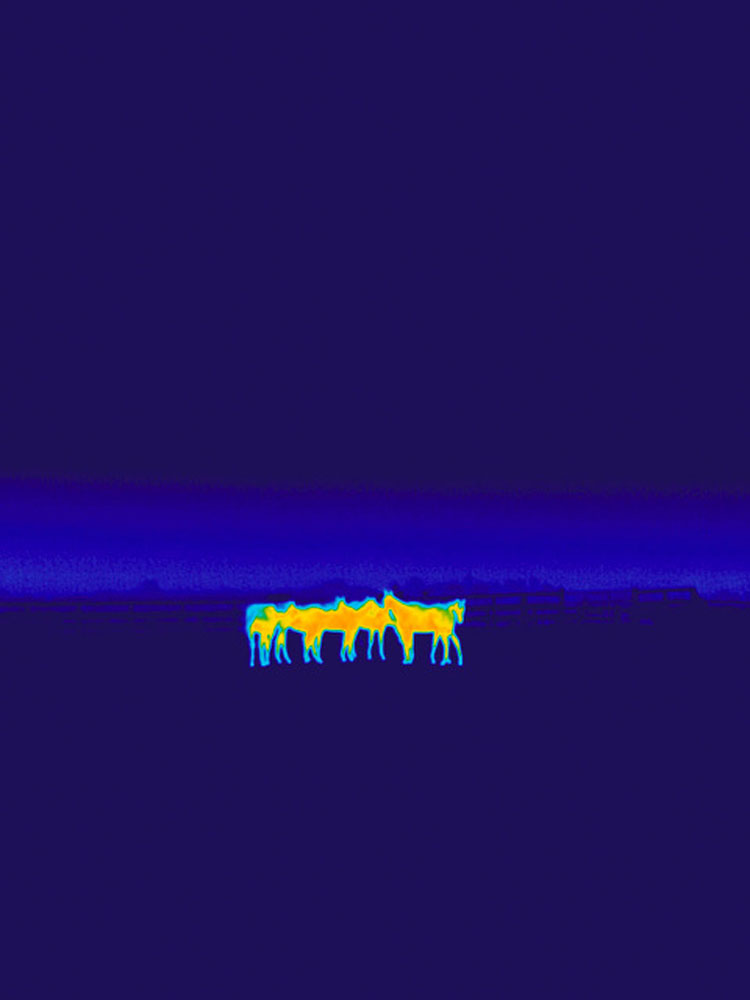
Kenji Hirasawa. Horse, 2015.
KHa: However, thermal imaging does not reveal the emotional expression of each sitter but gives information on the energy of the sitter through the tonal differences of blue, green, red and yellow.
KHi: In a standard photographic portrait, there are innumerable colours. I think there is a certain field that can be brought out by reducing the number of colours, or by changing the meaning associated with colours, such as the colour of the skin, eyes, hair or clothes. Thus, a portrait is given abstract meaning. I am interested in that field or value brought out by reducing the meaning attached to certain colours.
Currently, I am working on Figure, a portrait series composed of biometric information of the sitter’s body temperature. By using numeric code, my vision is to give the universal language of numbers to portraiture, so that even other intelligent animals, even someone from another planet, can appreciate it. For this reason, I intuitively chose the typeface Univers, which was designed by the Swiss typographer Adrian Frutiger.
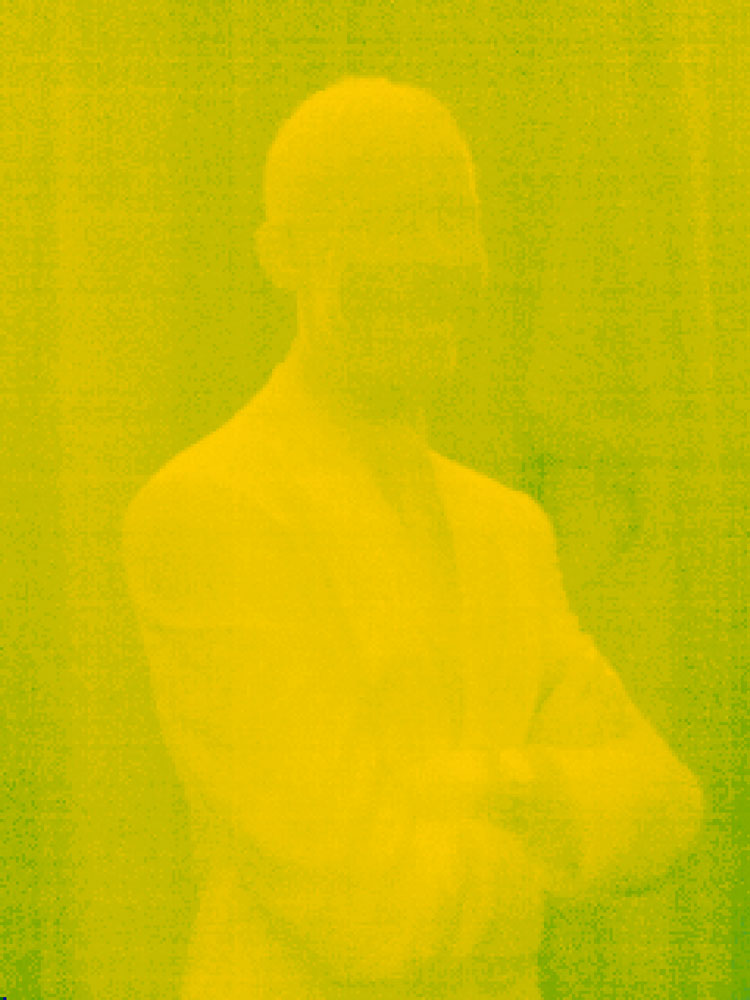
Kenji Hirasawa. Barack Obama, 2009, from the Celebrities series (2009-2011).
KHa: Can you explain how the sitter’s body temperature is incorporated into the Figure series of portraits?
KHi: A monitor attached to the thermal camera displays each part of the sitter’s body temperature in the form of thermal images: the temperature of the forehead, the nose, the lips, the cheek, the ears, the neck, etc. These thermal images are imported to a computer, and the information about the temperatures is written out as texts (figures) using software so that all the temperature information can be displayed at once. These text representations of body temperature are printed out on mirrored stainless steel using a UV inkjet printer. I use the inkjet printer brand swissQprint, which provides high-quality printing.
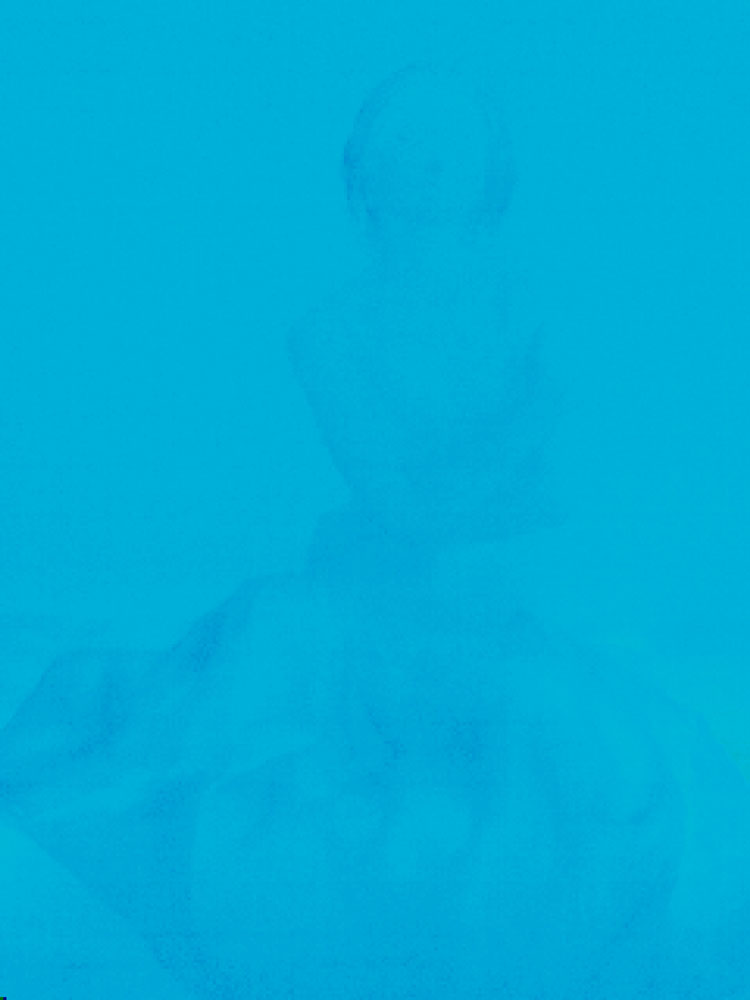
Kenji Hirasawa. Kate Moss, 2010, from the Celebrities series (2009-2011).
KHa: New technology can be useful in contemporary art. However, these technologies are continuously being updated, so last year’s technology can soon become obsolete. In such an environment, how do you see the potential of the classical medium of photography?
KHi: With its history dating back to less than 200 years, photography is still a relatively new medium of art within the vast history of art. The proliferation of the internet and globalisation have allowed people to communicate through extensive media in powerful and influential ways. In a society where things, and not just things, are becoming borderless, contemporary artists are not working on just one medium, but incorporating several media in their works. Photography is no longer the patent of the photographer. In such an environment, I am positive about change and diversifying, letting things flow. However, the nucleus of my expression is based on the American logician Charles Sanders Peirce’s theory of signs: the sign we interpret gives its meaning to the signified.
• Light and Heat, featuring work from Kenji Hirasawa and Rut Blees Luxemburg, is at the MYD Gallery, Tokyo, until 25 September 2021.